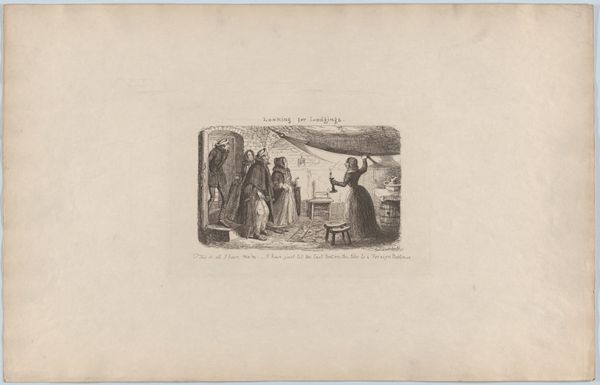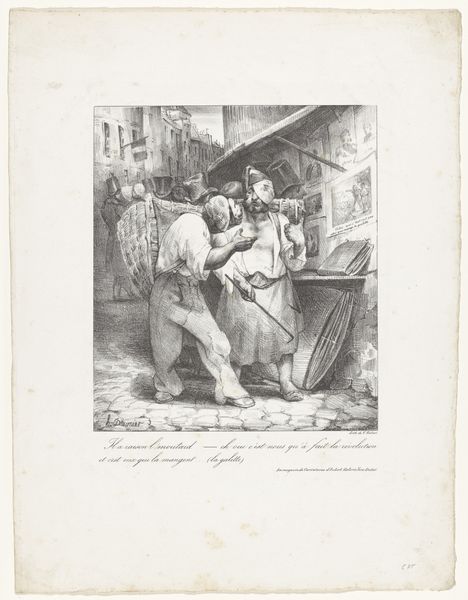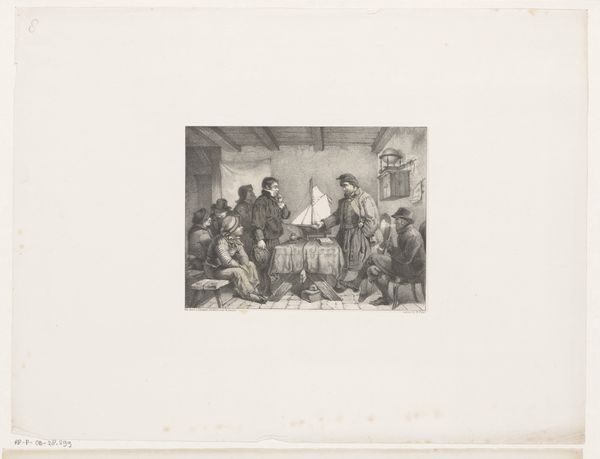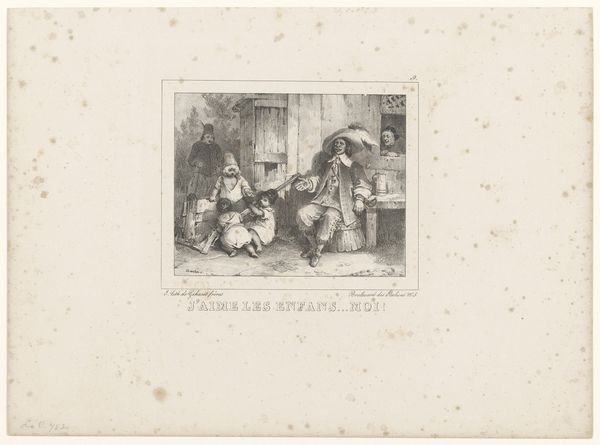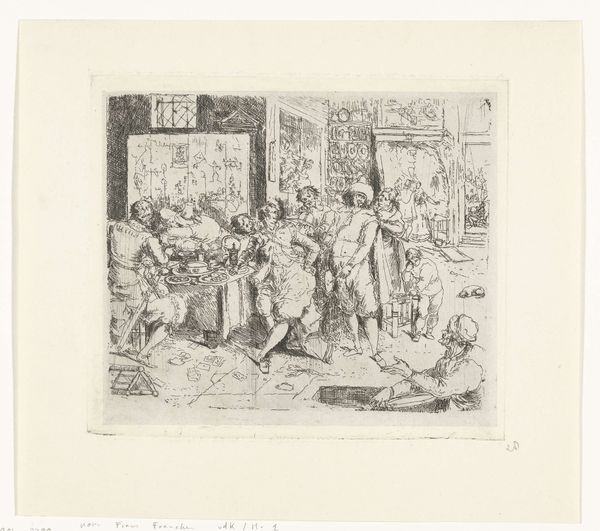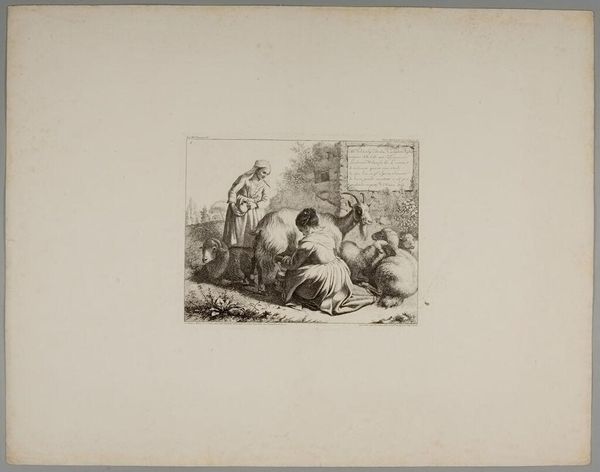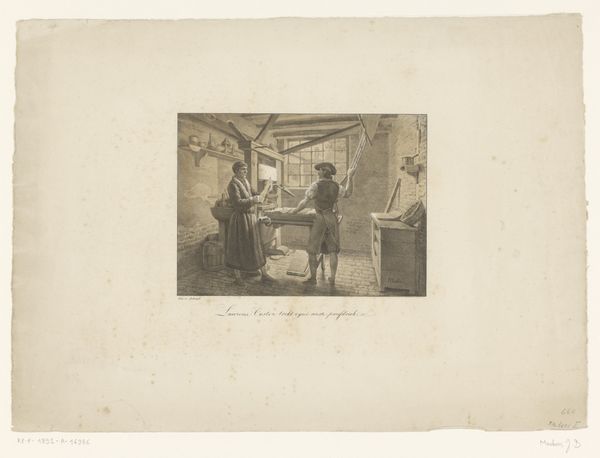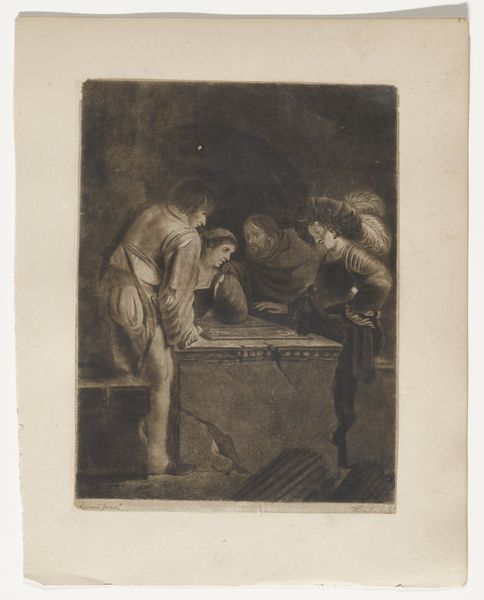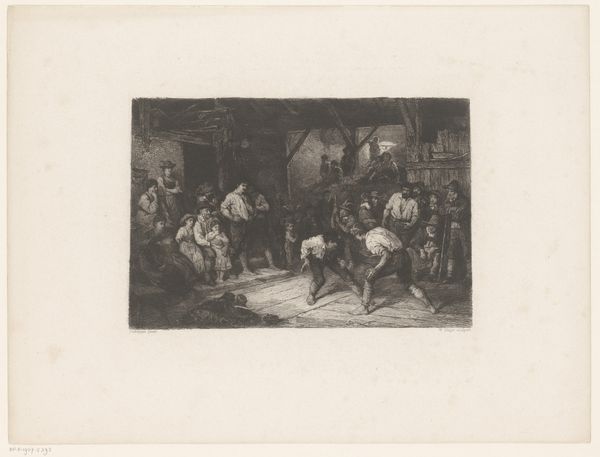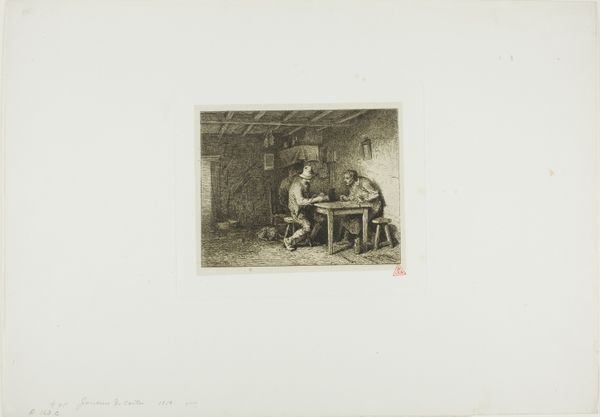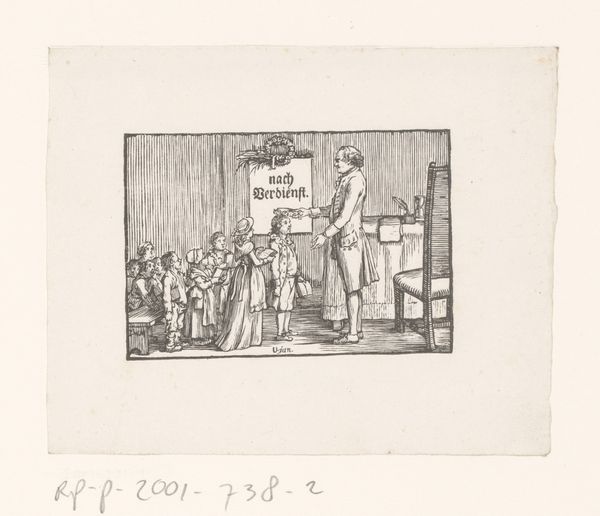
print, etching
#
16_19th-century
# print
#
etching
#
cityscape
#
genre-painting
#
realism
Dimensions: height 119 mm, width 149 mm
Copyright: Rijks Museum: Open Domain
Curator: So, let’s talk about this etching by Joseph Apoux, dating from around 1880 to 1900. It’s called "Boekhandelaren tijdens de lunch" which, loosely translated, means “Booksellers During Lunch”. Editor: It strikes me immediately as a slice of life—slightly gritty. The limited grayscale and visible hatching enhance the down-to-earth quality. It gives you that distinct end-of-the-19th-century, urban feel, doesn't it? Curator: Absolutely. What grabs me is the intimate glimpse it offers into the daily lives of these street-side booksellers, or "bouquinistes," in Paris. Look how they’ve arranged themselves and their goods. Editor: The notice behind them feels important too. What does it say? The visible words talk of the "repas de Messieurs les Bouquinistes", warning visitors not to interrupt the meal of these street booksellers! They look quite settled there with their wares—books used as props or support, even fuel, you could say, for conversation or maybe just as something to barter. What can you tell me about the physical process involved in making such prints at the time? Curator: It's intriguing how Apoux transforms everyday commercial activity into something visually engaging. It’s like he's trying to capture the fleeting, the ephemeral beauty of ordinary street life, which I think places it neatly in the Realism movement of the period. You get a palpable sense of a distinct profession—men dedicated to peddling words in any weather. Editor: Absolutely. And beyond the representation, think about the materials: the paper, the ink, the etching process itself... All components of the production chain making culture accessible to broader audiences through print. Were the bouquinistes able to read, and how did their work of curating and selling intersect with ideas? It seems a very conscious documentation of working people and how printed texts touched so many aspects of life. It does not simply present books as commodities but reflects how texts can literally build up somebody's workspace—or someone's whole life. Curator: What you bring up about accessibility hits the nail on the head, truly. These prints, with their relative affordability and reach, democratized art viewing, just as these very booksellers made literature itself more available to a larger populace. I guess, finally, for me, it evokes a whole atmosphere... that casual intensity around commerce with the written word. Editor: Exactly. The texture of life itself, materialized through labor, through print. We begin and end in understanding a city in process—where objects and people, as we have seen, come together to share a moment and a way of life.
Comments
No comments
Be the first to comment and join the conversation on the ultimate creative platform.

